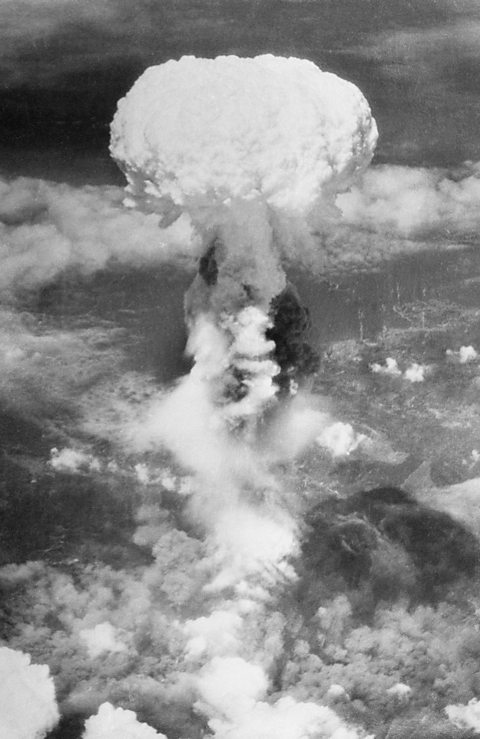Wartime alliance tensions
The alliance of the USA and the USSR during World War 2 was threatened by a number of issues:
- the USA delayed opening a second front in France until 1944 - sparking fears the Soviets might seek a separate peace deal with Germany
- the USSR refused to support the Polish army during the Warsaw Uprising of August 1944
- British and US officials excluded the Soviets from secret talks with the Germans to secure the surrender of their troops in Italy
The end of World War Two

In August 1945 the USA detonated two atomic bombs over the Japanese cities of Hiroshima and Nagasaki. The intention was to force Japan to surrender, thus avoiding a long war in the Pacific.
This action had the added potential of pressurizing the USSR into negotiating over Eastern Europe and Germany.
However, the fact that US President Truman did not inform Stalin of his intent to deploy nuclear weapons had the opposite effect.
Stalin was offended and his suspicion and distrust of the West intensified. Through his spy network, Stalin had known about TrumanÔÇÖs nuclear weapons for months.
The American victory in the Pacific, without Soviet help, meant the USSR was denied any share of the occupation in that area. This alienated Stalin further.
Development of the arms race
In 1949, the USSR tested its first atomic bomb. This led to a race between the two superpowers to amass the most powerful nuclear weapons with the most effective delivery systems.
In 1953, both the USA and the USSR were testing hydrogen bombs and it appeared to the Americans that the Soviets had caught up technologically. Both sides feared falling behind in research and production.
Eventually, nuclear weapons became a deterrent rather than a weapon for use in warfare. The theory of mutually assured destruction (MAD) championed the view that a superpower would not fire its nuclear weapons as the other side would automatically do the same. This theory relied on neither side having the potential for a ÔÇśfirst strikeÔÇÖ (the ability to destroy the other side with an intensive nuclear strike, before they attacked).
TrumanÔÇÖs aim of intimidating the USSR into compliance over Eastern Europe backfired. Stalin reacted with anger rather than fear. Tension was greatly increased as a result of the developing arms race which served to militarise both sides and bring war closer.